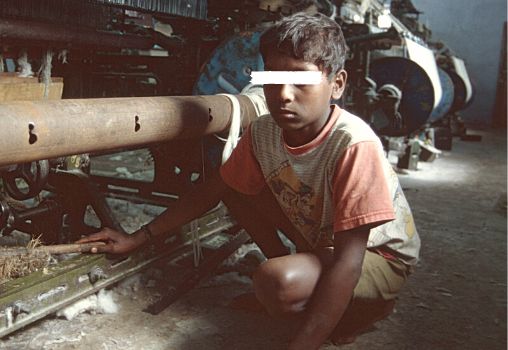Trigger warning: violence against children
By Team Baimanus
Translated by Alka Gadgil
In a macabre deal Adivasi children were sold recently in exchange of one sheep and four thousand Rs in Igatpuri block of Nashik district in Maharashtra. These children were traded off because adults were not able to earn enough for the family. This ghoulish act came to light because of the death of a girl.
As per the information gathered by Shramajeevi Sanghatana (SS) an NGO working in the area, around 30 children have been bartered. While the whereabouts of 6 children have been traced information about 24 children has not come in. The police have filed cases against four and one among them has been identified as Kantilal Karande who is on the run.
The deal was done by Karande who offered liquor and cash to children’s parents. 6 children among them are from Ahmednagar District. But it’s not a one-off incident, activists have time and again stated that child labour is rampant and children are almost kidnapped for it.
Unicef report states- ‘Child labour and exploitation are the result of many factors including poverty, social norms condoning them, lack of decent work opportunities for adults and adolescents, migration and emergencies. These factors are not only the cause but also a consequence of social inequalities reinforced by discrimination’.
Another factor is caste divide which pushes children out of school. SS has been tracking these children and there are many case stories of Dalit children trapped in child labour.
Just about three years ago a girl of 10 who was engaged by cowherds was badly beaten up by her employers and they left her in front of her house. She was admitted to the district hospital but she died during treatment. The girl belonged to Katkari tribe.
A case was registered against the shepherds and they were captured while they were on the run. In a survey undertaken by SS it was revealed that 30 children were sold on a single day in Thane district.
Children have been regularly sold and bought across India. A 10-year-old girl and her younger sister from Ahmednagar district of Maharashtra were sent to work on a farm.
Their day used to start at 4.30. and they had to milk the sheep and lend help in all other chores of the household. They were not given a weekly break and they were allowed to visit their parents only once in three years.
The older girl later shared she was studying in 6th standard in an Ashramshala (government run boarding schools) when she and her younger sisters were taken away by her parents and sent to a farm where they had to work.
In Parner a town in Ahmednagar district another 13-year-old child was sold for Rs 5000/. The child had to toil for almost 15 hours a day.
‘Three years ago, my brother and I had to leave school. We started working on a farm; we had to tend to sheep. Our master used to hit us on the back and on the legs. Once I was bitten by a dog but I did not get any treatment’, shared a boy of 13 who was rescued.
Most of the masters abuse and starve the children engaged by them. They were made to fetch water from well at midnight. When they complained they were beaten up.
Children from poverty-stricken families have to bear the brunt of social and economic hardship. Some of the cowherds were able to buy cows because they got cheap labour in form of children.
In another instance a little girl from Thane district started working on a farm as the family was very desperate. She was deprived of education and other rights because parents were not able to fend for the family.
Earlier this year children were rescued from a factory in Palghar district of Maharashtra. The proprietor of the establishment was arrested. Police had received a tip from a source.
Children are most often involved in child labour because their parents or guardians consider it as absolutely ‘normal’ for children to work! Sometimes children’s have to work for their own survival and that of their families. Some parents say they also had to work when they were children, so what’s wrong in it?
While talking about child labour, it is important to understand it from the perspective of the children, families and communities themselves.
Small children from tribal community are bought by shepherds for just a few thousand rupees. They are sourced from brick kilns or sugarcane contractors in neighboring districts including Ahmednagar.
These children are also beaten and tortured while doing their work. The little girl who died in Uvade has given a detailed account of everything that happened before her death. Meanwhile, a cowherd from the neighboring village who had engaged a girl child returned her to her parents.
Another boy who was taken away when he was in his early childhood does not know his parents or the name of his village. He does not even understand the language spoken in his family.
SS went to meet the Collector of Palghar district- Gangathanran to demand
“Strict implement the Vethbigari (bonded labour) Act, rehabilitate the disadvantaged and provide them with certificates”.
Poverty is considered as one of the most important causes of child labour as it is linked to other driving factors such as: low literacy and numeracy rates, lack of decent work opportunities, natural disasters, climate change, conflicts and mass displacement. Poverty and child labour form a vicious cycle, without tackling one, we cannot eradicate the other.
When families cannot afford to meet their basic needs like food, water, education or health care, they find a way to supplement their income by engaging children in paid work.
Link to the original Marathi article: https://baimanus.in/maharashtra-human-trafficking-racket-of-adivasi-girl-exposed-in-nashik-district/
The writer is a development worker from Maharashtra. Share your feedback at connect@charkha.org
Charkha Features
